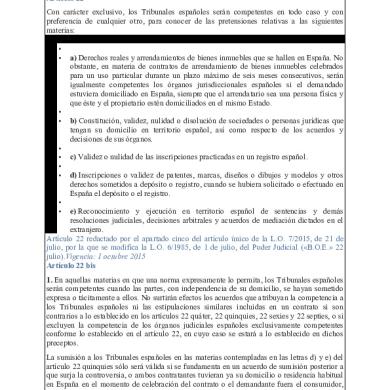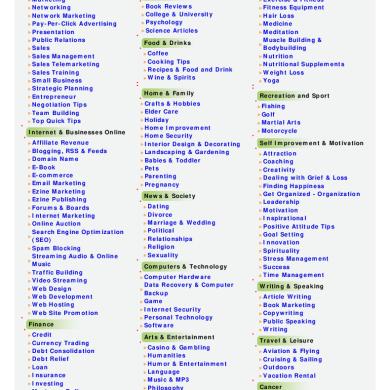* The preview only shows a few pages of manuals at random. You can get the complete content by filling out the form below.
Description
How Xiaomi Redefined What It Means to Be a Platform
Traditional platform businesses generally fall into one of two categories:
Ecosystems, such as Apple’s App Store, which offer limited resources to a wide array of independently-run firms; Corporate Venture Capital (CVC) companies, such as Intel Capital, which invest heavily into a small number of ventures that promise either financial or strategic returns.
However, new research into Xiaomi’s growth strategy suggests that the Beijing-based electronics giant has developed a blended approach, borrowing elements of both traditional ecosystem and CVC firms to create a broad ecosystem of strongly-supported partner ventures. Based on a series of in-depth interviews with executives from both Xiaomi and its partner companies, the authors identify three factors that have enabled this novel business model: Xiaomi structures its investments to incentivize innovation and build trust while still ensuring alignment, proactively fosters an ecosystem mindset throughout its organization, and takes a deliberate, measured approach to expanding the scope of its ecosystem over time.
The CVC Approach Perhaps the most traditional approach to expansion is through CVC: An established corporation invests funds directly into startups that it hopes will pay off either strategically or financially. For example, Intel’s venture arm Intel Capital invests in startups whose products and services complement Intel’s main business, thus increasing demand for its computer chips. For these sorts of strategically-motivated investments, the investing company is often willing to forgo direct returns on the ventures themselves in order to reap more substantial gains in its main business.
The Ecosystem Approach Conversely, an ecosystem strategy differs from CVC in that the larger company often doesn’t acquire any actual equity in its partner startups. Instead, the ecosystem leader leverages its own technology and resources to establish a network of smaller, complementary companies that create and deliver their product offerings on top of the ecosystem leader’s core architecture, platform, or bundle of critical resources.
This is best illustrated by Apple’s App Store: Apple, the ecosystem leader, provides tools to help app developers build and sell apps in its App Store, but those businesses aren’t owned by Apple and they maintain full operational independence.
In an ecosystem model, the complementary businesses remain largely autonomous, co-creating value for both themselves and the platform in response to market incentives rather than equity-driven obligations.
Xiaomi’s Blended Business Model Most of today’s platform-based company’s fall into one of these two buckets — but the success of new companies such as Xiaomi illustrates that a blended approach is possible as well
Founded just eleven years ago as a smartphone manufacturer, Xiaomi’s mobile platform now supports more than 300 million connected IoT devices worldwide, including more than 2,000 consumer devices from 400 partner companies. On the one hand, Xiaomi clearly acts and positions itself as an ecosystem business. The company partners with hundreds of hardware and software ventures that connect to Xiaomi’s platform and bolster its core smartphone business with complementary goods and services At the same time, there’s no denying that Xiaomi is also a CVC business: It invests in these partner companies, giving them access to extensive resources such as capital, designers, marketers, supply chain relationships, and more, in exchange for a minority equity stake and the right to co-develop, brand, and sell their products. Not a typical ecosystem… Why Xiomi is Different This blended approach means that while Xiaomi borrows from both traditional CVC and ecosystem businesses, its strategy differs from these models in several notable ways.
In contrast to typical ecosystem models, Xiaomi takes a proactive, hands-on approach to supporting its partner ventures. While companies like Apple or Google make their operating systems available and share a set of relatively generic tools to help app developers create and release products on their own, Xiaomi actively enforces consistent branding and quality standards across its entire product portfolio.
Punch Line The products provided by the startups in our ecosystem, whether offered through online stores or offline retail outlets, are all consistent in their design style. At Xiaomi, we have assembled a team of world-class industrial designers dedicated to working with the startups we’ve invested in to help them create products consistent with Xiaomi’s image and up to Xiaomi’s standards.
Drawbacks of XIOMIO but it also carries greater risk for Xiaomi’s core brand. Because the complementary businesses are so deeply and publicly intertwined with Xiaomi, any issues that emerge with these partners (such as poor product quality, public scandals, etc.) can harm both Xiaomi and the entire ecosystem As a result, while typical ecosystems allow many partners to join, Xiaomi must take a much more deliberate approach to vetting startups for inclusion on its platform and ensuring those startups’ incentives are aligned with its own — which is where the CVC investment approach comes into play. Similar to a CVC investor, Xiaomi takes a minority equity position in ventures, signaling its commitment to supporting the new businesses while still incentivizing them to innovate and create value for both themselves and the ecosystem at large. while traditional CVC businesses generally focus on either strategic goals or financial returns, Xiaomi’s blended model enables it to truly emphasize both objectives There are a few ways we see these differences play out in practice: On the one hand, while financially-driven CVC funds usually have limited involvement in their invested ventures beyond providing capital, Xiaomi remains actively engaged with everything from technology development, product design, supply chain, manufacturing, to marketing and sales for all their complementary ventures.
On the other hand, while a strategic CVC fund will typically focus its investments in just a few ventures that are closely related to the company’s core business and that can increase demand for its core products, Xiaomi invests in and works with several hundred partner ventures across dozens of different product categories, many of them only tangentially related to Xiaomi’s original core smartphone business.
What It Takes to Implement a Blended Business Model 1. Structure: Configure investments to incentivize innovation and build trust.
similar to a typical CVC, Xiaomi usually takes just a 20-30% stake: enough to ensure partners are aligned with Xiaomi without eliminating their incentive to succeed. The company also typically takes a board seat to support resource sharing and communication, but similarly avoids a structure in which total control would pass to Xiaomi. In addition, to build trust and demonstrate support for its partners, Xiaomi intentionally backs just one venture at a time in each product category. the backed ventures gain exclusive access to Xiaomi’s full range of support, including proprietary knowledge, network resources, and technological and organizational capabilities, they don’t have to worry that Xiaomi might pit them against a competitor, as might be the case in a typical ecosystem model Xiaomi executives also work hard to develop personal connections with the ventures’ management teams, reducing potential concerns that Xiaomi might expropriate their innovations
2. Process: Foster an ecosystem mindset throughout the organization.
While a traditional ecosystem or CVC business might have an isolated department focused on supporting its partners or investments, Xiaomi’s ecosystem mindset is deeply embedded in both the core business and every venture
The company’s Ecosystem Director, Liu De, is a co-founder who works closely with the CEO, and his team is responsible for critical decisions ranging from what product categories to enter to what ventures to invest in and what kinds of individualized support to offer the ventures. This interdisciplinary team of more than 200 experts, with backgrounds in everything from product development and user interface design to supply chain management, manufacturing, quality assurance, marketing, sales, and more, is tasked with both identifying trends and businesses strategically aligned with Xiaomi, and then supporting those businesses once they join Xiaomi In building the ecosystem, we have created a team of experienced product managers — most of whom are engineers — to make investment choices. They focus on products and technological trends, rather than financial numbers, when evaluating venture potential.
this doesn’t mean ignoring investment returns. But rather than looking at market potential in a vacuum, the ecosystem team is built to identify ventures that will align with Xiaomi’s approach to market selection and penetration: products that complement the existing ecosystem, target the mass market, and can scale to a market leadership position within two to three years.
3. Scope: Craft a plan to deliberately expand the scope of the ecosystem
Every platform business hopes to expand to include more and more partners — but Xiaomi’s success has hinged on its ability to make prudent decisions about when and how to grow the scope of its ecosystem. No company has infinite resources, and the blended ecosystem-CVC approach requires significant hands-on managerial support to be effective. One senior executive explained, We have been very disciplined in managing our ecosystem scope and charting our expansion path. To grow, we need to enter and invest in new product categories; yet, investment in too many categories will stretch our resources thin. Oftentimes, this means saying no to a lot of seemingly attractive opportunities that do not fit into our business model.
Xiaomi first entered markets immediately adjacent to its core smartphone business, including power banks, headphones, smart watches, fitness trackers, and so forth. Once it had established that first level of complementary products, the company began integrating other IoT-connected consumer electronics and home appliances, such as scooters, rice cookers, air purifiers, and robotic vacuum cleaners. It’s only in the last few years that Xiaomi has begun to expand further into a range of lifestyle products only tangentially related to its initial offerings, such as backpacks, home goods, and footwear. While these products may seem distant from Xiaomi’s core, they are in fact consistent with its strategy of building two-way complementarity between core and partner businesses, driving traffic to its online and offline retail channels and increasing demand for products throughout the ecosystem. Of course, Xiaomi is far from the only platform experimenting with this type of blended business model. Amazon is pursuing a similar strategy through its Alexa Fund, which invests in innovative voice and AI startups built around the Alexa platform Other Chinese companies such as Huawei, Oppo, and Vivo are also pursuing strategies modeled on Xiaomi’s blended approach, and in response to a continuously evolving competitive landscape, Xiaomi itself will also inevitably have to continue to evolve. As Ecosystem Director Liu explained, “we find the world to be ever-changing in the process of building our ecosystem. Opportunities that were once very promising can fade away quickly as consumer tastes evolve. During these times of rapid change, we must adapt our strategy And indeed, Xiaomi has already begun tweaking its strategy, experimenting with targeting certain narrower market niches as well as with partnering with larger companies — and this may mean rethinking elements of its CVC-esque investing philosophy as well as its broad ecosystem mindset. While the blended ecosystem-CVC model has worked well for Xiaomi so far, only time will tell how it and other leading platform businesses will continue to adapt for an uncertain future.












